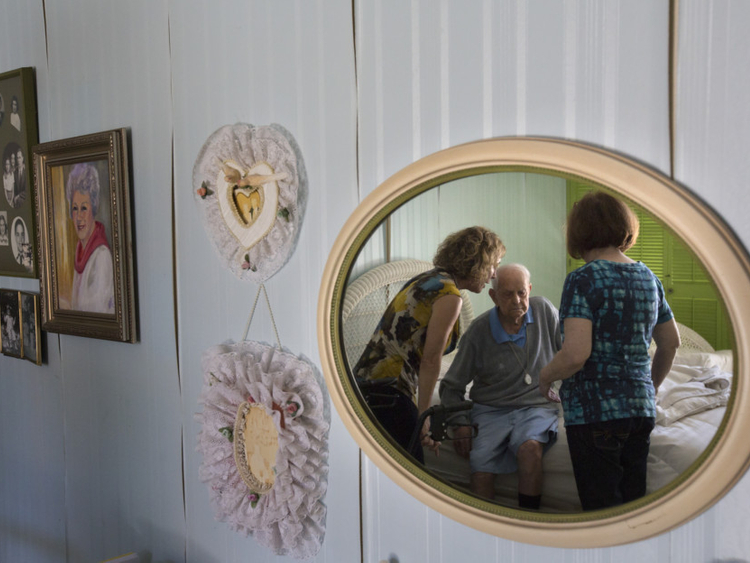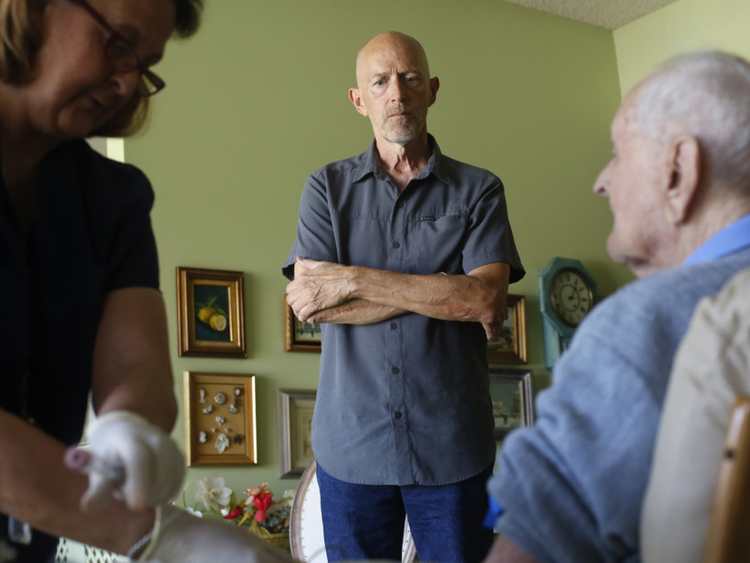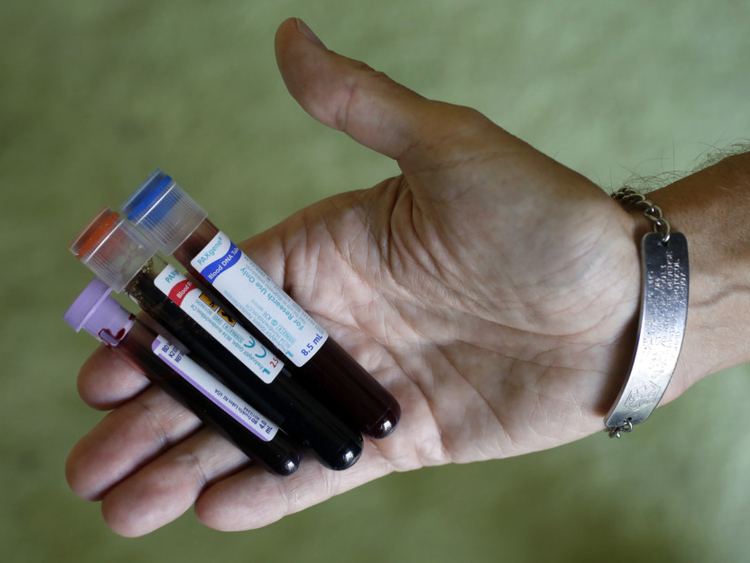
Washington: As one of the exceedingly rare members of her species to live beyond age 110, Goldie Michelson had divulged her secrets to longevity countless times before dying last year at 113.
“Morning walks and chocolate,” the Gloucester, Massachusetts, resident and one-time oldest living American told the steady stream of inquisitors that marked her final years.
Unlike the growing ranks of nonagenarians and centenarians, those who breach a 12th decade, known as supercentenarians, rarely face protracted illness or disability before they die, a boon that many of them have ascribed to habits.
“I try to live the truth,” said Shelby Harris, who threw out the first pitch of the local minor league baseball team’s 2012 season a few months before he died at 111 in Rock Island, Illinois. Emma Morano of Verbania, Italy, still cooking her own pasta until a few years before she died in April at 117, prescribed raw eggs, and no husband.
But even as they indulged the notion that exceptionally healthy longevity can be explained by lifestyle, each agreed to donate DNA to a private effort to find the secrets in supercentenarian genes.
The full genetic sequences of Michelson, Harris and Morano are among some three dozen genomes of North American, Caribbean and European supercentenarians being made available last week by a non-profit called Betterhumans to any researcher who wants to dive in.
A few additional genomes come from people who died at 107, 108 or 109. If unusual patterns in their three billion pairs of A’s, C’s, G’s and T’s — the nucleobases that make up all genomes — can be shown to have prolonged their lives and protected their health, the logic goes, it is conceivable that a drug or gene therapy could be devised to replicate the effects in the rest of us.
“I hope you find something that does someone some good,” said Clarence Matthews, 110, who allowed his blood to be drawn as a final contribution to the database in 2016 at his Indian Wells, California, home.
The rare cache of supercentenarian genomes, the largest yet to be sequenced and made public, comes as studies of garden-variety longevity have yielded few solid clues to healthy ageing. Lifestyle and luck, it seems, still factor heavily into why people live into their 90s and 100s.
Advantage in the genes
To the extent that they have a genetic advantage, it appears to come partly from having inherited fewer than usual DNA variations known to raise the risk of heart disease, Alzheimer’s disease and other afflictions.
That is not enough, some researchers say, to explain what they call “truly rare survival”, or why supercentenarians are more uniformly healthy than centenarians in their final months and years.
Rather than having won dozens of hereditary coin tosses with DNA variations that are less bad, scientists suggest, supercentenarians may possess genetic code that actively protects them from ageing.
But the effort to find that code has been “challenged”, as a group of leading longevity researchers put it in a recent academic paper, in part by the difficulties in acquiring supercentenarian DNA.
The New England Centenarian Study, one of a handful of longevity research groups around the world focusing on supercentenarians, now turns down prospective DNA donors younger than 103: “We tell them they’re too young,” said Dr Thomas Perls, the study’s director.
The DNA sequences being released last week were acquired almost single-handedly by James Clement, 61, the founder of a company advised by the prominent Harvard geneticist George Church.
Zeroing in on which variations affect which phenotypes requires the statistical power of tens of thousands of DNA samples — almost certainly a deal-breaker when it comes to supercentenarians, whose verified number, worldwide, hovers at about 150.
On large swaths of the planet, where birth records are sketchy or nonexistent, identifying verified supercentenarians is virtually impossible. In the US, researchers say supercentenarians account for about one in 5 million people.
A secretive Google spin-off called Calico, for California Life Co., is said to be scrutinising the genome of the naked mole rat, celebrated for a lifespan 10 times longer than that of most of its rat cousins. Federally funded scientists are testing a drug on monkeys based on an experiment that doubled the lives of roundworms.
And in laboratories across the world, the markers of age in over-the-hill mice, rats and turquoise killifish are, sometimes, being reversed.
But what works in shorter-lived organisms often does not translate to humans, whose average lifespan in developed countries is approaching 80 years. So despite the limitations of Clement’s database, several prominent researchers have already expressed interest in it.
Price of sequencing falling
“This could show the utility of starting a bigger collection,” said Paola Sebastiani, a longevity researcher at Boston University.
An account of what Clement calls the Supercentenarian Research Project offers a glimpse at what that might entail, including perseverance, compassion and a sense of humour that trends toward the dark.
It was an inauspicious start, Clement admitted in an email to a friend in January 2011. The first supercentenarian Clement had lined up to visit, Mississippi Winn, had died at 113 before he could get from his home in San Jose, California, to hers in Shreveport, Louisiana.
Condolences would become a familiar refrain. Of the 70,000 or so Americans who live to be 100, only some two dozen are typically alive at 110.
Once that milestone is reached, as Clement quickly learnt, the chance of dying within the next year is roughly 50 per cent. After 113, the odds are closer to 66 per cent. The oldest person on record, Jeanne Calment, was 122 when she died in 1997; only one other person is known to have lived beyond age 118.
“Even while you’re packing the car, the person may fall ill and say they’re not up to it,” Clement said.
There was, nominally, the prospect of making money.
But with a business plan that, even to some of his investors, sounded more like a research project, Clement seems to have undertaken the task largely because it provided the chance to act on a long-standing interest in human longevity.
The kind of ultra-rare mutations that supercentenarians might harbour, Church believed, were not likely to be detected with standard techniques, which scan only the places in the genome where DNA is already known to vary between individuals.
To look for as-yet-uncatalogued variations would require sequencing all of the supercentenarians’ 6 billion genetic letters, a far more expensive procedure. When he and Clement first discussed the idea in 2010, the cost was about $50,000 per genome.
But the price was falling. And with the financial support of a handful of like-minded wealthy individuals, “it just seemed,” Clement said, “like something I could do.”
— New York Times
News Service















